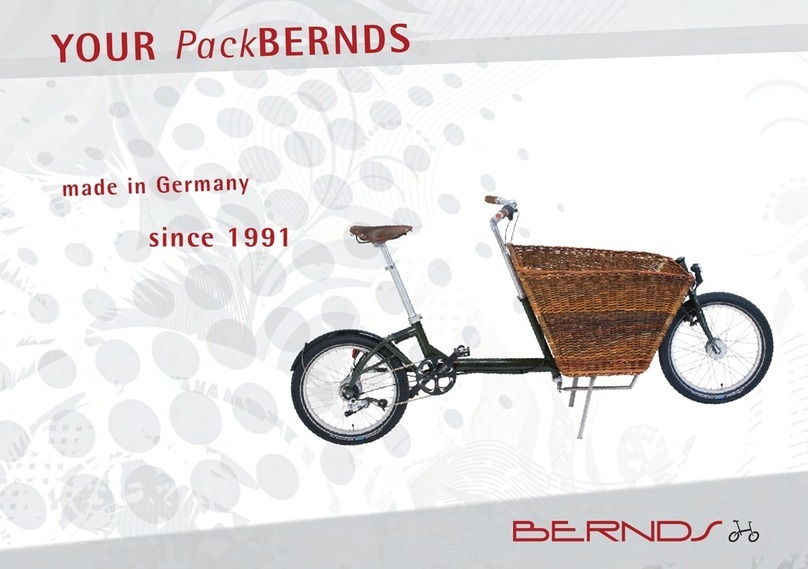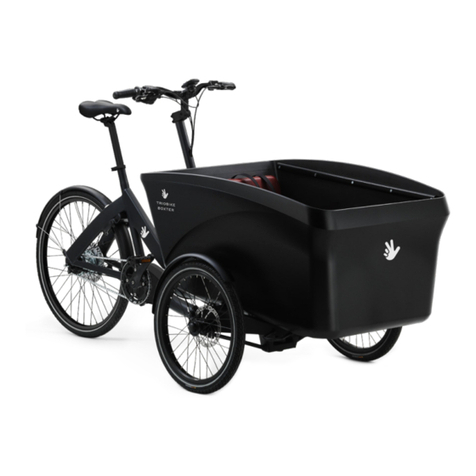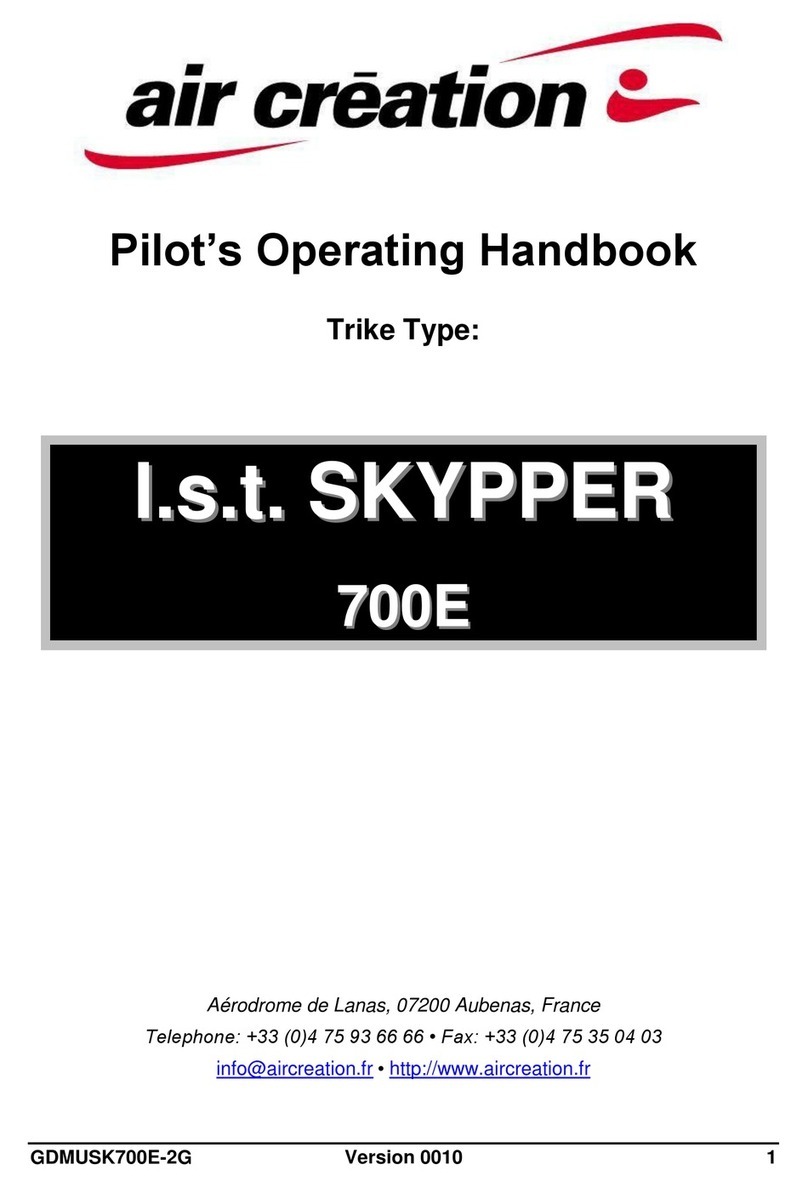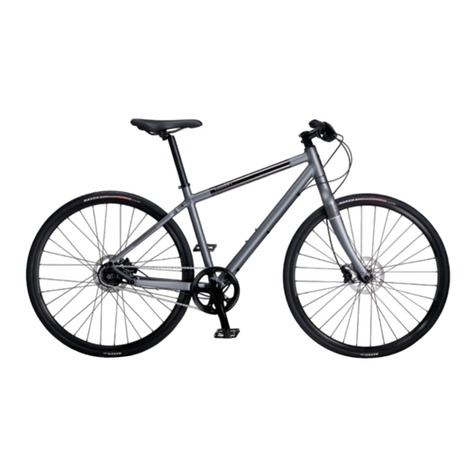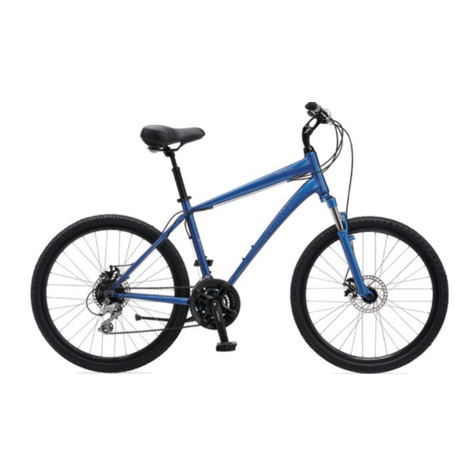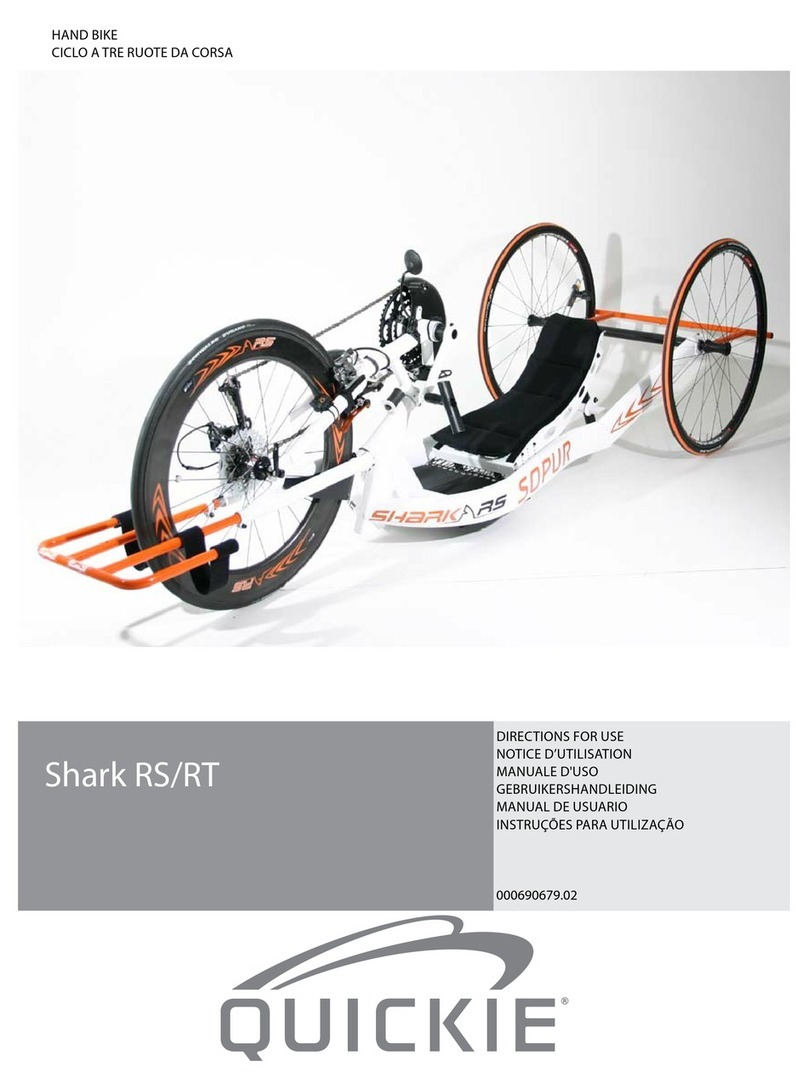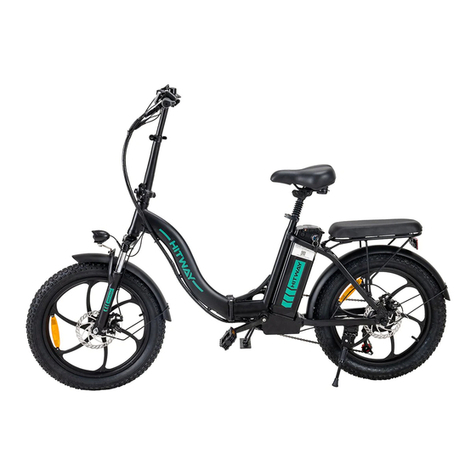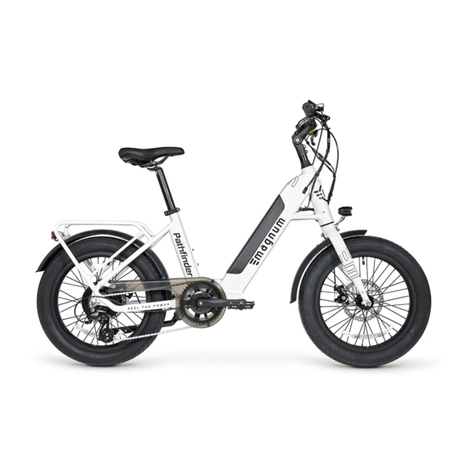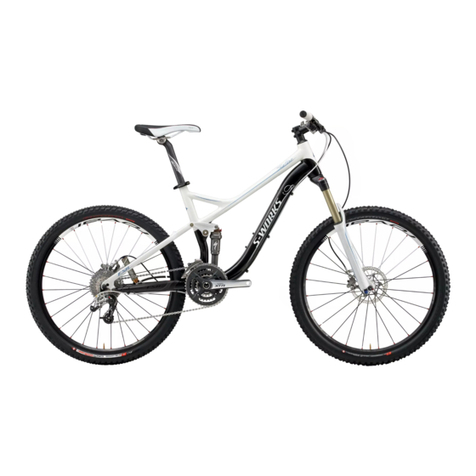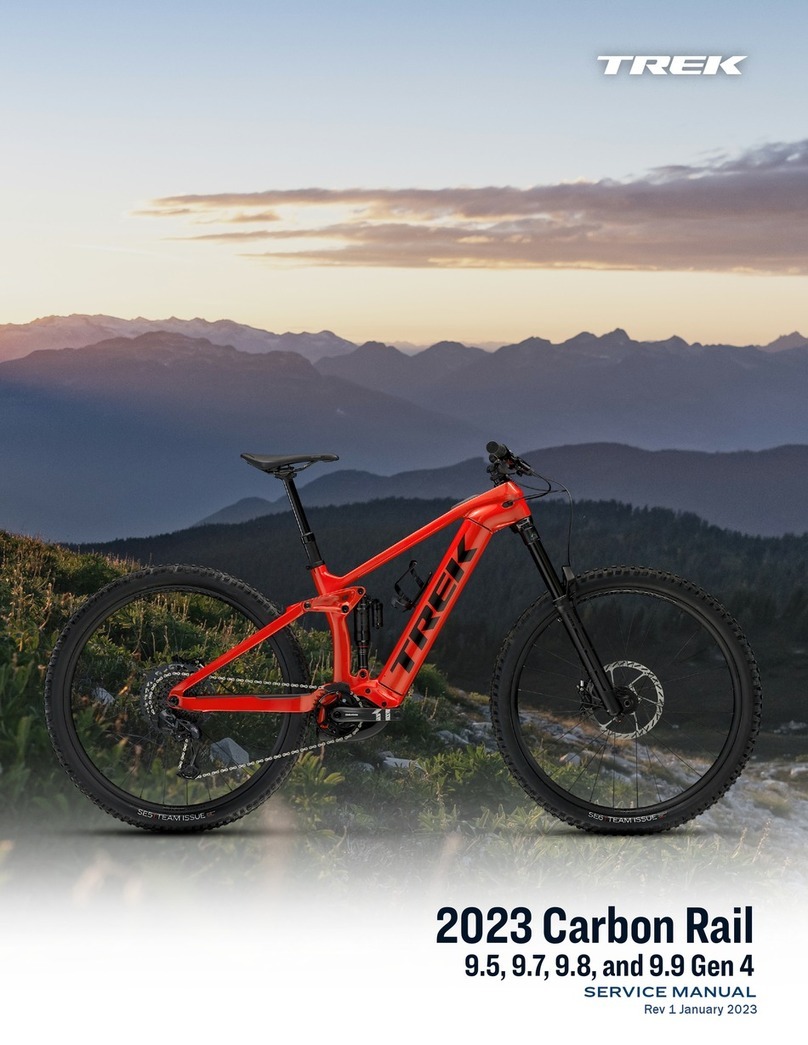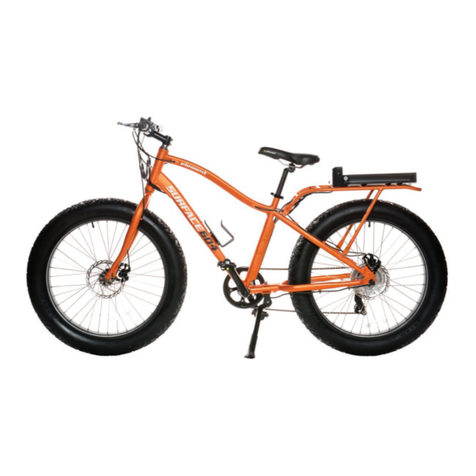Bernds Folding Tandem Lowstep User manual

made in Germany
since 1991
YOUR BERNDS-Folding Tandem Lowstep

Dear Customer,
we have summarised for you the most important points about your
BERNDS-Folding Tandem Lowstep. Before your first ride, please
take the time to read this data sheet.
If you are unable to find something or need further information, if you
have any requests or suggestions, contact us at info@bernds.de!
Your BERNDS-Folding Tandem Lowstep – the ingenious
all-rounder
The basic design for our folding tandem we have inherited from
our folding bikes. We have mounted the robust, easy-running 20-
inch wheels and the sprung, folding swingarm on a solid frame
and adapted the whole geometry to the particular needs of tandem
riding. As a tandem rider you can be out on the road considerably
faster and with comparatively little effort compared to „normal“
cyclists.Our folding tandems are very easy and safe to handle, even
at high speed.
Even if you have never ridden a tandem before, on our BERNDS-
Folding Tandem Lowstep, you will soon find there are no problems
but lots of fun riding a tandem. Please take note of the section „Tips
on tandem riding“ in this booklet.
The team at BERNDS wishes you pleasant cycling!
Congratulations on your new BERNDS-Folding Tandem Lowstep!

Adjusting your BERNDS-Folding Tandem Lowstep
Saddle height and angle
Loosen the Allen screw (no. 5 Allen key) at the top of the seat tube
and adjust the saddle so that when the pedal is at the bottom of its
travel, your leg is straight when your heel is standing on the pedal.
Point the saddle straight forward. Even after folding and unfolding
the seatpost, the saddle will still be in this position which is the right
one for you!
Handlebar height and angle
There are various sitting positions which are all equally ergonomic
and appropriate depending on your riding style. Adjust the height
and angle of the handlebars so that you adopt a comfortable posi-
tion when seated. If this seems not to be possible, ask us: you can
obtain from us many different handlebar shapes and stems with a
variety of heights and lengths.
Brake handle, bell
If need be, you can adapt the reach to suit your own hand size on all
brake handles. To do this, read the enclosed operating instructions
for the brakes. Adjust the bell so that you can reach it comfortably
at any time. If you have any questions, get in touch with your
specialist dealer or with us. We will be happy to advise you.
Before every trip
The handlebar stem and the seatpost must be securely tightened.•
All quick-release catches must be locked hand tight.•
If you are using folding pedals, these must be folded out and latched.•
Check the functioning of the brakes by rolling the bike forward•
and pulling on the brakes. The brake handles must move easily
and take effect immediately.
At twilight, always ride with the lights on and check before•
setting off that the lighting system is working.
With a bottle dynamo, click it into place and crank the rear–
wheel with the bike on the stand.
With a hub dynamo, the front and rear lights should come–
on as soon as the bike moves.
Lift the bike a few centimetres and let it drop onto the ground.•
If you hear any rattling or unusual noises, check for the cause
and rectify it: if necessary, tighten any bolts.
Always ride with enough tyre pressure. The minimum and•
maximum pressures are marked on the sidewall of the tyres.
For our tandems, we recommend that you tend towards the
maximum pressure.
Do not ride with worn tyres.•
Congratulations on your new BERNDS-Folding Tandem Lowstep!

How do you fold up your BERNDS-Folding Tandem Lowstep?
Hold your BERNDS-Folding Tandem with your left hand on the hand-
lebars and your right hand on the saddle.
Folding in the front rider‘s handlebars:• Rotate the hand-
lebars clockwise about ¾ of a turn so that the handlebars
and the front wheel are pointing towards you. Loosen the
quick-release lever on the handlebar stem, pull the handlebar
unit upwards from the tube, and lay it flat on the frame or the
rear wheel.
Removing the seatposts and the rear rider‘s handlebars:•
Loosen the quick-release lever on the lower seatposts and pull
the seat tubes upwards and completely out. Follow the same
procedure with the rear rider‘s handlebars.
Swinging in the rear sub-frame:• Lift your BERNDS-Folding
Tandem Lowstep slightly off the ground by the top tube
and stand on the rear sub-frame or the rear axle so that the
suspension unit comes loose from the catch. Swing the rear
sub-frame inwards until the tyre is resting against the lower
frame tube.
Note: with derailleur gears (and Dual Drive), you should put
it into one of the top three gears (the ones with the larger
sprocket diameter) before swinging in the rear sub-frame; this
will prevent the chain coming off.

Important notes on safety!
The handlebar stem and the upper seatpost should never•
be pulled out further than the safety mark which shows
the maximum extension.
The lower seatpost and the handlebar stem for the rear
•
rider must be pushed right down while riding!
Mounting sprung saddles or seatposts is not permitted!
•
The maximum payload including two riders is 260kg.•
Your BERNDS• -Folding Tandem Lowstep is suitable for ri-
ders between 1.40 and 2.10m tall. If your height or weight
exceed the stated maximum, please get in touch with us.
Carry luggage only in the bags and baskets intended for
•
the purpose which are correctly fastened and only up to
their stated maximum weight. Our accessory range inclu-
des a wide selection of individual solutions.
Children may only be transported on an approved and
•
correctly mounted child seat.
Follow the applicable national regulations! In Germany
•
BERNDS-Folding Tandem Lowstep only complies with the
traffic regulations when provided with an approved ligh-
ting system which is available as an accessory.
Manipulating the forks and frame, such as engraving
•
registration numbers, may lead to fracturing the frame
and is not permitted.
The next step reduces the size when folded even further:
Optionally:• removing the lower frame tube: if need be, you
can fold the tandem especially small by dismounting the lower
frame tube before swinging in the rear sub-frame: Using a no.
16 fixed spanner and a no. 8 Allen key, remove both nuts and
bolts with which the lower frame tube is fixed. After unfol-
ding the bike, it is essential that the frame tube is secu-
rely assembled once again; for the bolts it is important to
use the correct tools mentioned above.
Optionally:• removing the front wheel: loosen the clip im-
mediately above the front forks with a 6 mm Allen key and pull
the front wheel complete with forks downwards and out of the
tube. Caution: the forks are still connected to the handlebars
via the Bowden cable belonging to the front brake and possibly
via the electric wire from the hub dynamo. Take care when
unfolding that the forks are pushed completely into the
head tube as far as the end stop and that subsequently
the clip is closed hand tight!
Unfolding your BERNDS-Folding Tandem Lowstep is
done by reversing the sequence.

We should point out that many components on a bicycle are sub-
ject to wear and tear and so must be regularly serviced or replaced.
These include tyres, brake pads, brake cables, chainwheels and spro-
ckets, wheel rims, handgrips, the saddle, the bearings on wheels and
the bottom bracket. Depending on use, these parts must be serviced
at regular intervals and replaced when they reach their individual
limit of wear. Consequently, BERNDS recommends making a re-
gular inspection every 2 000 km, and at least once a year.
Instructions for care
Make sure that the folding seatpost is lubricated and free of•
dirt. It must be easy to pull out and push in again.
Frame and attachments: Remove dirt with a soft, damp cloth.•
Do not use detergents containing solvents or abrasive cleaning
products such as scouring powder or steel wool.
Take care of the chain by cleaning it regularly with a commer-•
cial cleaning product and then apply chain lubricant.
Do not use a high-pressure cleaner under any circumstances!•
Maintenance and inspection
After roughly the first 200 km, your BERNDS-Folding Tandem Low-
step should have its first inspection made by a bicycle mechanic,
during which the following points in particular should be observed:
The spokes on the road wheels settle into place; for this reason•
they should be checked and the wheels centred again if necessary.
We build in high-quality bolts and fixings. Neverthless, all bolts•
should be checked to see they are sitting firm.
Bowden cables tend to stretch so gears and brake settings•
should be checked.
The synchronising chain which joins the two bottom brackets•
has to be tightened from time to time. To do this, the eccen-
tric in the front bottom bracket should be loosened with an 8
mm Allen key, and the bottom bracket in the eccentric rotated
forwards. The chain should be just tight enough so that in the
middle, between the bottom brackets, it can be pushed down
about one finger width. This low tension is all that is necessary
in order to compensate for normal torsion in the frame. The
synchronising chain must be assembled in such a way that
both pairs of pedals are synchronised!

Warranty
BERNDS gives a lifetime warranty on the frame. This applies to the
registered first owner and on the condition that regular inspec-
tions are carried out by a dealer as per the attached maintenance
booklet.
On all other parts BERNDS gives a warranty as stipulated by legis-
lation for a period of two years from the date of purchase. Damage
due to natural wear and tear is excluded.
Mounting non-OEM parts, not specified by BERNDS, as well as re-
pairs which are faulty, incomplete or not professionally carried out
shall extinguish all claims under warranty.
BERNDS is not liable for incorrect use, e.g.: overloading, jumps, use
in competitions, intentional behaviour and the consequences the-
reof which is in contravention of the law or of traffic regulations.
We recommend having repairs and regular inspections done by a
specialist dealer approved by BERNDS.
Gears: 8-gear derailleur
8-gear hub
3x8-gear DualDrive
14-gear hub
Manufacturer/Type
Brakes: V-Brake
HS33
disc brakes
Manufacturer/Type
Lighting system: bottle dynamo
Shimano hub dynamo
SON
Manufacturer/Type
Supplementary operating instructions
The following parts have their own operating instructions which
you will receive separately at the time of purchase:

Tyres 20“ Schwalbe Big Apple 50mm, 2-5 bar
(others optional)
Wheel rims Aluminium U-profile 24mm 36-hole
Spokes 36 Nirosta, 2mm
Steerer race 1 1/8 inch sealed (BERNDS special)
Stem adjustable angle, 1 1/8 inch, different lengths
optional
Handlebars Moon (other handlebars optional)
Seatpost patented, aluminium 29.8mm
Saddle Terry Citta (other saddles optional)
Please contact us for optional Foot stands and Mudguards.
Models of drive train
8-gear derailleur development 2.45m – 7.13m (48 tooth
to 11-32), chain drive with freewheel
8-gear hub development 2.41m - 7.39m (42 tooth to 15),
with back-pedal or freewheel (Premium hub)
3x8-gear DualDrive development 1.57m – 8.48m (42 tooth to11-32),
Sram DualDrive, 8-gear combined 3-gear hub
14-gear hub development 1.68m – 8.85m (48 tooth to13),
Rohloff SpeedHub
Your BERNDS-Folding Tandem Lowstep at a glance
Steel frame made in our own factory*
Dimensions when folded 106x80x20cm with hinged joint
Rider height from 140cm up to 210cm
Step through height 29cm front / 39cm back
Rear sub-frame length 40cm
Top tube length 56cm front / 68cm back
Overall length 219cm Payload 260kg
Wheelbase 169cm Weight 20,5kg and upwards
Basic model
Powder coating 3 coats (primer, powder colour coating, clear
lacquer), standard colour Diamond Black,
other RAL colours at extra charge
Suspension rear wheel elastomer suspension (3 degrees of
hard-ness available)
Bearings rear swingarm with self-lubricating,
sintered brass bushing
Pedals high-quality ball-bearing type with non-slip
rubber surface (optional fold or push-fit pedals)
Brakes V Brake (optional hydraulic wheel rim or
disc brakes)
*Standard dimensions with 50mm width tyres, made-to-measure bikes deviate from these

Tips on tandem riding
Who does what: This is not a „must“, but makes good sense: if there
is a considerable difference in weight, the heavier rider sits at the
front for better weight distribution. Helpful tip: changing positions as
a trial is the best way to see the ride from the other‘s point of view.
As the „stoker“ (or rear rider) you „only“ turn the pedals and have
to take your cue as regards cadence and effort from the steersman.
Please do NOT help to steer, do NOT lean outwards on bends and do
NOT shift your weight abruptly or in an uncontrolled manner.
As the steersman, you are responsible for steering, braking, and
changing gear, and also for obeying the traffic regulations. New-
comers to tandem riding should get acquainted first of all with the
behaviour of their BERNDS-Folding Tandem Lowstep on safe terrain
with little traffic. Practice first of all without and then with the rear
rider, especially riding on bends and correct braking.
Communication: Talk to each other! After a while you will intui-
tively act together, but bear in mind that from the rear, you see less
than from in front. As steersman then, you should warn of sudden
braking or evasive manoeuvres or of obstacles.
Getting on and setting off: The steersman gets on first, pulls up
the right pedal to 11 o‘clock and selects the appropriate gear. The
rear rider follows and gives the steersman the signal to start.
Stopping: the better to be able to set off again, the steersman pulls
a pedal up to 11 o‘clock. The rear rider puts down his leg on the
same side as the steersman.
Change gear where possible at the top of the pedal revolution; to
start with, let your companion know when you intend to change
gear so that both riders briefly take the weight off the pedals. Hub
gears can be changed with the bike at a standstill or with the pedals
stopped, which in urban traffic offers great advantages.
Braking: Practice emergency braking! In contrast to a single-rider
bicycle, you can pull on the front brake until it locks without any
danger of the bike flipping over.
On hills: Change down to a lower gear in time; ride with the highest
possible pedalling rate to save your joints.
Downhill: Brake in time, brake on and off so that the brake system
does not overheat. Avoiding keeping the brakes on lightly but con-
stantly without releasing them. In principle, on tandems we recom-
mend using disc brakes.

BERNDS GmbH & Co. KG
Wittekindstraße 39b
32756 Detmold
Tel: 0049 5231 17777
Fax: 0049 5231 17778
www.bernds.de
This manual suits for next models
1
Table of contents
Other Bernds Bicycle manuals

